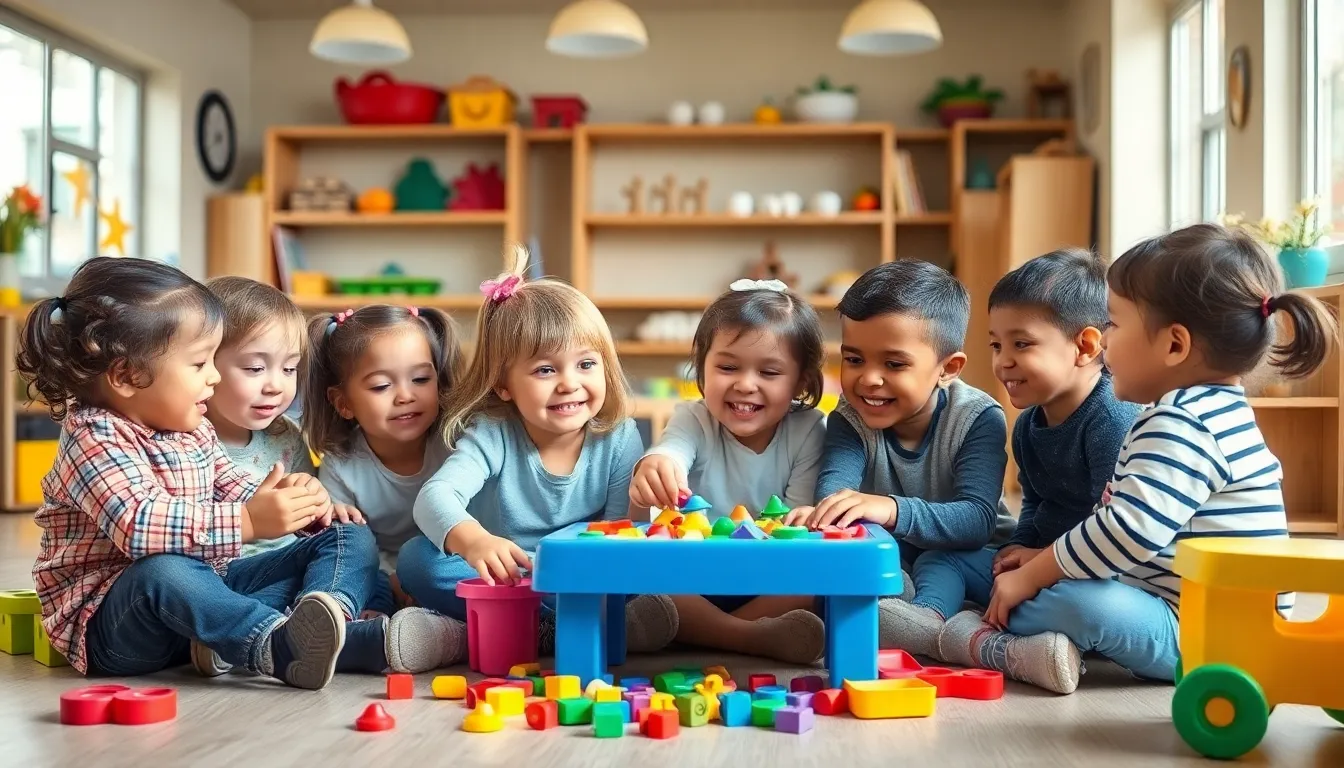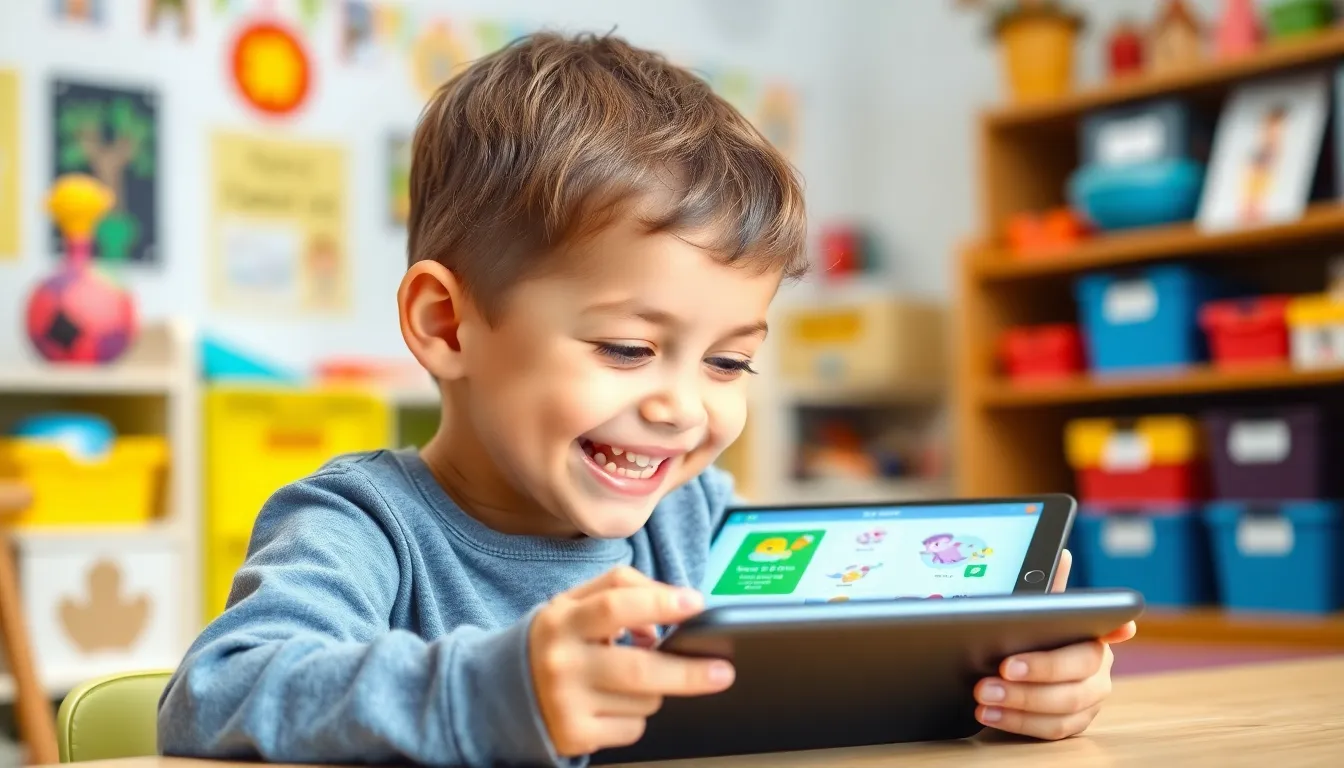In a world where communication reigns supreme, it’s time to let toys do the talking—literally! Imagine a universe where playtime isn’t just about fun but also about building those essential communication skills. From chatting with friends to expressing feelings, the right toys can turn even the shyest little ones into confident conversationalists.
Table of Contents
ToggleOverview of Communication Skills
Communication skills encompass the ability to convey ideas, thoughts, and emotions effectively. These skills involve both verbal and non-verbal methods, ensuring messages are shared and understood accurately. Active listening stands as a vital component, helping individuals respond thoughtfully and engage in discussions.
Children develop these skills through interactions in various settings, and playtime plays a crucial role. Social interactions during play help enhance vocabulary and sentence structure. Children practice turn-taking, which fosters patience and promotes respectful dialogue.
Expressing feelings can also occur through imaginative play. When children act out scenarios, they explore different perspectives and learn empathy. Role-playing with toys encourages them to express themselves clearly and confidently. This hands-on approach reinforces positive communication habits.
Opportunities to ask questions and clarify misunderstandings arise during play. Engaging with peers sparks discussions, enabling children to articulate their thoughts. Encouragement from caregivers or peers provides motivation to use language creatively and confidently in conversation.
Lastly, collaborative play experiences, such as building a puzzle or engaging in group games, further strengthen communication skills. Through teamwork, children learn negotiation and compromise. These interactions build foundational skills essential for effective communication in later life.
Importance of Communication Skills in Development

Communication skills play a crucial role in a child’s development. These skills enable children to express their thoughts and emotions effectively, fostering healthy relationships with peers and adults.
Early Childhood Communication
During early childhood, children start developing foundational communication skills. Simple interactions, such as sharing toys or asking questions, lay the groundwork for effective communication. Imaginative play often sparks conversations, helping children articulate their ideas. Engagement in group activities encourages turn-taking and listening, vital aspects of effective exchange. Social interactions during this stage nurture vocabulary growth, sentence construction, and the ability to convey emotions clearly. These early experiences shape a child’s self-confidence in expressing themselves.
Benefits of Developing Communication Skills
Developing communication skills offers numerous benefits that extend into adulthood. Effective communicators often exhibit stronger academic performance, as they articulate ideas clearly and engage in collaborative discussions. Enhanced communication fosters deeper connections with peers, promoting teamwork and mutual understanding. Children with strong skills can navigate social settings more easily, reducing anxiety and building confidence. They learn problem-solving through negotiation and compromise during play. Overall, strong communication skills empower children to express their needs, advocate for themselves, and build meaningful relationships throughout their lives.
Types of Toys to Enhance Communication Skills
Toys can significantly enhance communication skills through play. Various types of toys facilitate different aspects of language development.
Interactive Toys
Interactive toys promote engagement and communication through conversation prompts and responses. Devices that require children to talk back or complete sentences encourage verbal expression. Many interactive stuffed animals or dolls can ask questions, prompting children to answer or express their feelings. Additionally, electronic learning toys that include quizzes or games develop listening skills and vocabulary. By challenging children to respond, these toys foster interactive dialogue and increase confidence in verbal exchanges.
Educational Games
Educational games target critical thinking and language use during playtime. Board games that involve storytelling prompt players to articulate thoughts and strategies. Word-building games enhance vocabulary and spelling, which serve as a foundation for effective communication. Puzzle games encourage collaborative problem-solving, requiring players to negotiate and discuss solutions. These engaging formats teach children to express ideas clearly while reinforcing turn-taking and active listening skills.
Role-Playing Toys
Role-playing toys invite imaginative scenarios that broaden communication abilities. Dress-up costumes, action figures, and playsets allow children to create stories and enact various roles. Such toys empower children to express their thoughts and feelings more freely. Engaging in role play nurtures empathy, as children learn to view situations from different perspectives. Through these scenarios, children practice articulation and negotiation, essential components of effective communication.
Tips for Choosing the Right Toys
Choosing the right toys significantly influences a child’s communication development. Consider the following factors when selecting toys that nurture these vital skills.
Age-Appropriate Selections
Select toys designed for specific age groups to ensure they match developmental milestones. Younger children benefit from toys that promote basic vocabulary and turn-taking, such as simple board games or interactive storybooks. Pre-schoolers thrive with toys facilitating imaginative play, encouraging role-playing scenarios that spark conversations. School-age children require more complex toys that stimulate critical thinking and collaboration, such as construction sets or puzzles requiring teamwork. Always check age recommendations on packaging to ensure safety and suitability.
Engaging Features to Look For
Focus on toys with engaging features that promote interaction and conversation. Look for toys that respond verbally or encourage questions and storytelling. Interactive elements, like buttons and sounds, invite children to express themselves. Choose toys that provide opportunities for cooperative play, such as games requiring multiple players. Also, consider toys that emphasize creativity, allowing children to invent scenarios and characters. These features foster not only verbal skills but also non-verbal communication, elevating overall expressive abilities.
Toys are more than just playthings; they’re powerful tools for enhancing communication skills in children. By selecting toys that encourage interaction and imaginative play, parents can foster a child’s ability to express themselves and connect with others. Engaging in collaborative play not only builds vocabulary but also nurtures essential skills like negotiation and empathy.
Investing in the right toys can lay a strong foundation for effective communication that benefits children throughout their lives. As they grow, these skills will translate into better relationships and improved academic performance. Prioritizing playtime as a means of communication development is a valuable strategy that will pay off in countless ways.








